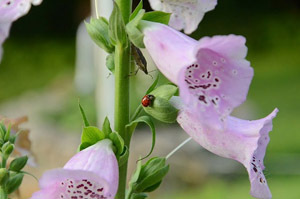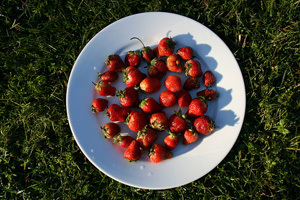How to Make Your Own Window Garden
One of the things that has allowed humans to flourish as a species on this planet is our cultivation of plants for food. Jump forward several million years, and technology is now making it easier than ever to get growing — even in unlikely spaces.
Minimalism’s never been so tasty
If you love gardening but are short on space, Windowfarms could be the answer to your windowsill gardening needs. The company makes a clever, technology-infused planter that is both space-conscious and beautiful to look at.

The hydroponic Windowfarms planter lets you grow an astonishing range of plants, from seedling to mature specimen, right on your windowsill. The system works by pumping water and plant food through a connected chain of vertically stacked plant containers, with minimal mess or noise. You can buy a premade Windowfarm kit for $119, but if you sign up on Windowfarm’s website, you can get plans to build your own for as little as $30.
Windowfarms started life as a Kickstarter project, funded by home gardeners who loved the idea of this elegant and high-tech windowsill gardening alternative. Investing in one of these ups not only your green credentials but your techy ones, too!
Basic tips for the beginner gardener
But you don’t have to spend much to have your own kitchen garden. And if you’re a novice gardener, you might want to start a little smaller than a hydroponic indoor gardening device. Here’s what to do if you’ve never tried growing anything before.
1. Choose your plant. One of the best plants to try if you’ve never grown anything before is lettuce. Lettuces are easy to grow from seed and grow quickly without needing too much care or sun. Other easy things to grow include radishes, kale, and herbs such as mint and cress. If you have a yard you can transfer your seedlings to, then peas and beans are great plants to start off in a windowsill garden.

2. Choose your spot. When you’re choosing somewhere to put your indoor garden, try to find a windowsill with lots of light and a window you can open and close for fresh air. If you’re not sure about the right position for the plants you’re planning to grow, look for printed instructions on most seed packets. If you have a smartphone, try one of these apps for planting tips.
3. Choose your container. As long as you have good soil, the container you grow seedlings in shouldn’t matter too much. You can grow cress seedlings in egg cartons, then use the tiny plants to add some peppery heat to your sandwiches. Well-washed plastic take-out cartons and old Tupperware boxes with some holes in the bottom for drainage both make excellent improvised pots. If you’re planning on growing anything more complicated than lettuce or a few herbs, it might be worth investing in a few plastic plant pots with proper drainage holes in the bottom; they’re reusable and last for years.
Plant some roots
Scoop the compost into your pot, leaving about half an inch clear at the top. If your seeds came with planting instructions, follow those; if not, sprinkle the seeds sparsely across the soil and then cover very gently with the last half-inch of compost. Don’t pat it down too hard. Gently water the seeds. After that, water your seeds every few days, using enough water to make the soil moist rather than like mud.
Get growing!
Why should you try growing your own plants?

1. It’s easy. While you may not be coaxing rare orchids into bloom by the end of the week, almost anyone can grow things successfully. It’s great fun and produce edible or beautiful rewards.
2. It’s healthy. If you choose to grow fruit and vegetables, you’ll be growing healthy food that you like to eat.
3. It could save you money. Getting started growing things doesn’t have to be expensive. All you need are a few packets of seeds, a small bag of compost, and a few receptacles to grow things in. You can grow seeds and some plants in really small containers such as (clean) take-out containers, glass jars, and egg cartons. From one packet of lettuce seeds, you could get enough lettuce to last you from now until October — as you eat one batch, start sowing the next.
Do you have a windowsill garden? What’s your favorite thing to grow? Share your green-fingered tips in the comments!
This story originally appeared on Tecca More from Tecca:
Get Your Hands Dirty: 9 excellent blogs for beginning gardeners
7 practical iPhone and iPad apps for gardeners
Gardening when there’s no room for a garden
[Image credits: Katherine Gray, OakleyOriginals]